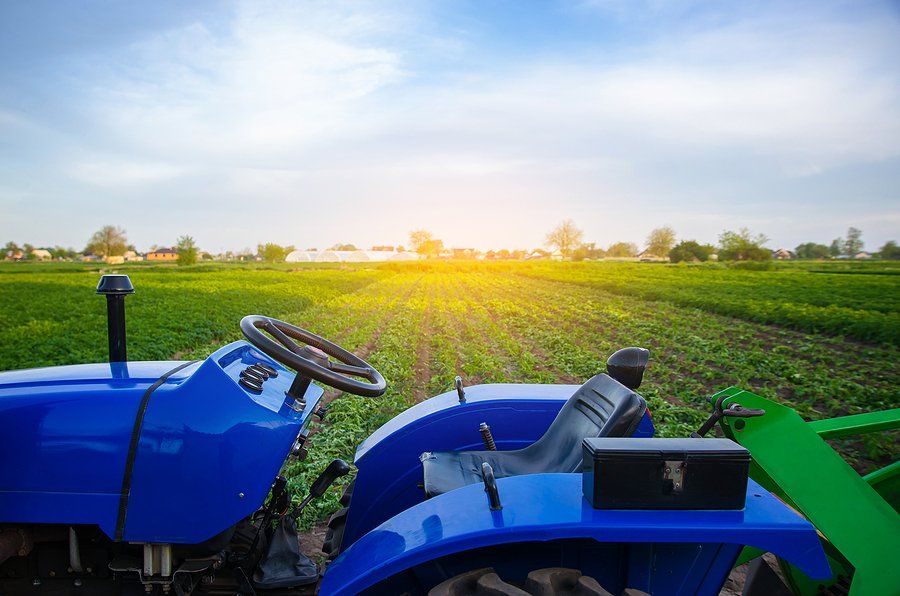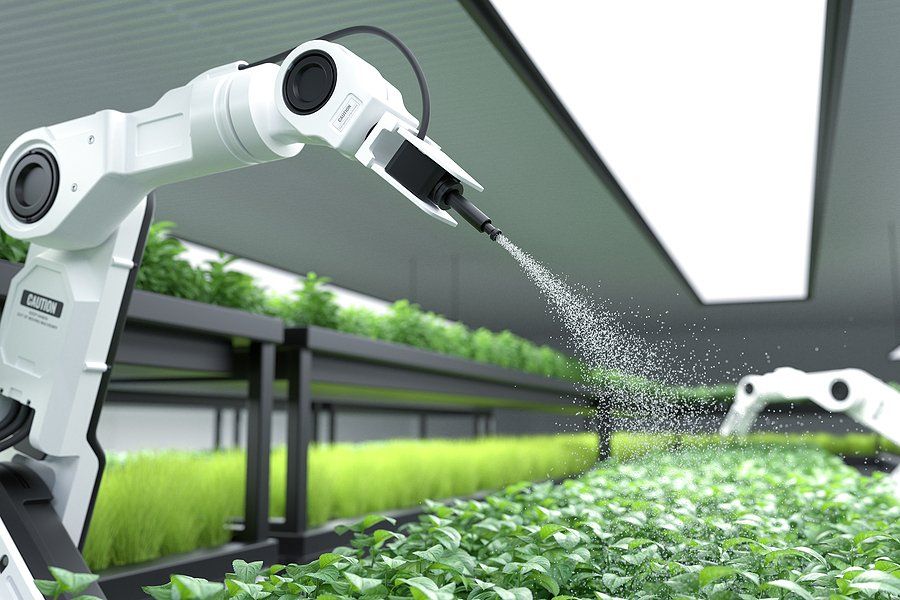News Articles
Agribusiness Industry
Agtech,
where it's at and how it could benefit you
15 May 2022

Driverless tractors, vegebots and machines that evaluate meat quality. It’s all part of the brave new world of agtech. As the global population grows and the cost of food production soars, agtech is set to change the face of farming. But what is it and how can you benefit?
Agricultural technology, or agtech, is predicted to become Australia’s next $100 billion industry by 20301. That’s according to the NSW government, which says a rising middle class, especially in the Asia Pacific, is seeing diets shift towards the kind of agriculturally-intensive foods that Australia specialises in.
Add in global warming, rising costs of energy, labour, fertiliser, seeds and herbicides, and the stars have aligned for agtech to shine.
What exactly is agtech?
Agtech refers to innovations that improve efficiency, profitability and/or sustainability. This covers hardware and software, new technologies and new applications – all of which help farmers meet emerging consumer demands and/or enter new markets.
Harnessing the digital agricultural revolution is regarded as the next big opportunity for Australian farmers. However, the key to unlocking much of this digital agriculture revolution is on-farm connectivity – not just at the homestead but out in the paddock.
In support of this goal, the NBN and the National Farmers’ Federation have announced a 3-year partnership, designed to lift adoption of digital agriculture.
According to Paul Fletcher, Minister for Communications, Urban Infrastructure, Cities and the Arts, “Capabilities such as remote monitoring and automation can drive efficiency and productivity for our agricultural sector – lifting its value from $60 billion to $100 billion by 2030.”2
What’s available right now?
Already, we’re seeing the use of big data for predictive weather modelling, while in the UK, robotics known as vegebots are being developed that can select and pick harvestable fruit and vegetables.
In January 2022, John Deere rolled out its first driverless tractor3. The idea is that the tractor can be transported to a field and configured for autonomous operation, allowing farmers to leave the paddock to focus on other tasks, while monitoring its status from their mobile device.
It sounds simple enough but the tractor relies on six pairs of stereo cameras that enable 360-degree obstacle detection and calculate distance to determine if the machine continues to move or stop.
John Deere Australia/New Zealand Production Systems Manager, Ben Kelly, explains, "Australian farmers have always led in the adoption of agtech, and as they continue to be faced with limited availability of skilled labour, access to autonomous machinery for large-scale production has never been so important.”
The tractor has launched on the US market, and will be available in Australia over the next few years.
Agtech is also being used at various stages of the supply chain. MEQ Probe for example, uses spectral analysis to determine the eating quality of meat on a carcass-by-carcass basis. The technology blends physics, chemistry and biology coupled with machine learning to provide meat processors with an objective measure of meat quality, with real-time information shared with on-farm growers.
Can agtech work for you?
According to John Deere Managing Director Australia/New Zealand, Luke Chandler, "With the world population forecast to increase to nearly 10 billion people by 2050, global food demand is predicted to grow by 50%, meaning farmers will need to be as efficient and sustainable as possible in every phase of production."
He adds that farmers will need to meet this challenge while working with changing climate and weather conditions, variations in soil quality and the presence of weeds and pests.
Agtech holds plenty of promise, but how do you know if technology is right for your farming business?
"Agtech holds plenty of promise, but how do you know if technology is right for your farming business?"

We offer a 5-point checklist of what to consider.
1. Know the problem you are trying to solve
Agtech can come at a significant cost though this is likely to fall over time. Understand your motive for purchasing – be it automating a task or reducing costs.
2. Understand the agtech’s capabilities
Evaluate what the technology is designed to do and consider how well this fits your agribusiness.
3. Does the agtech fit with your connectivity and internet speed?
Can the agtech interface with your existing equipment/programs, and how reliant is it on good connectivity and speed?
4. Ask about back-up support
Can you test drive the agtech, or are there decent case studies and/or testimonials to validate its efficiency and reliability? Enquire about any warranty and the availability of back-up service.
5. Evaluate the full cost
Does the agtech involve a one-off purchase, or are there ongoing subscriptions or additional costs? Ask about troubleshooting support, and whether the agtech can be maintained and serviced locally.
Agtech isn't just changing the face of farming, it’s helping to produce, supply and store food in sustainable ways. For more information on how agtech could benefit your agribusiness,
contact the team at
Brentnalls Agribusiness.

Discuss Further?
If you would like to discuss, please get in touch.
Disclaimer
The information provided in this article does not constitute advice. The information is of a general nature only and does not take into account your individual financial situation. It should not be used, relied upon, or treated as a substitute for specific professional advice. We recommend that you contact Brentnalls SA before making any decision to discuss your particular requirements or circumstances.







